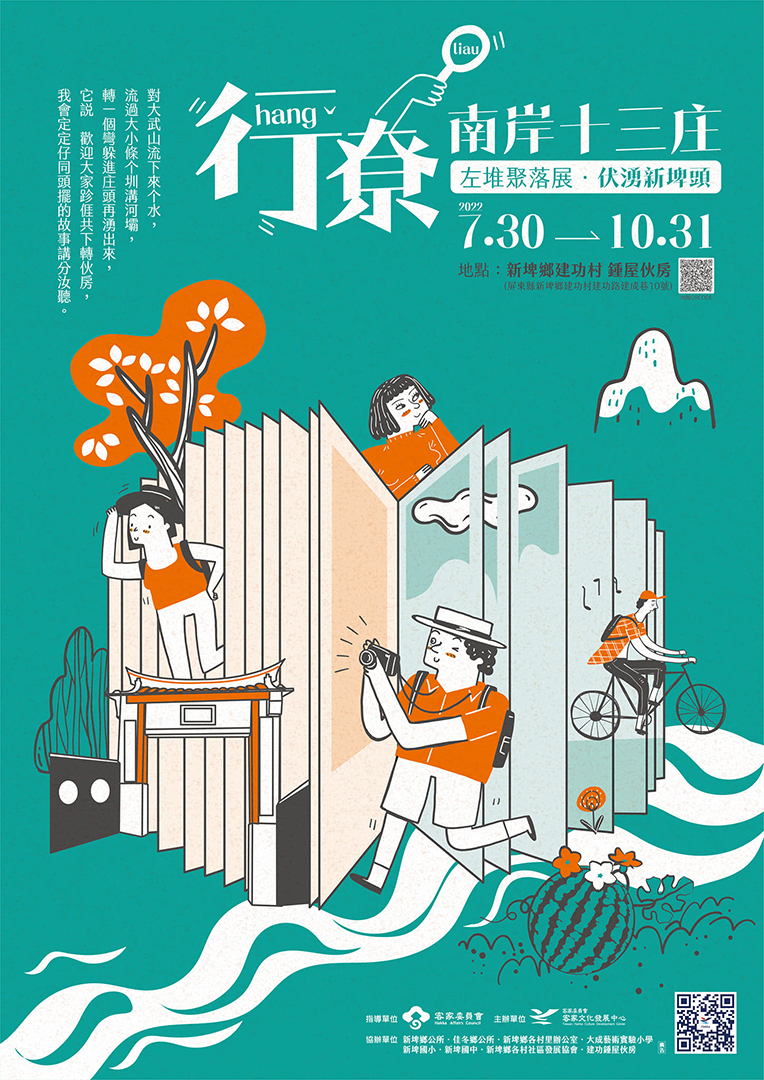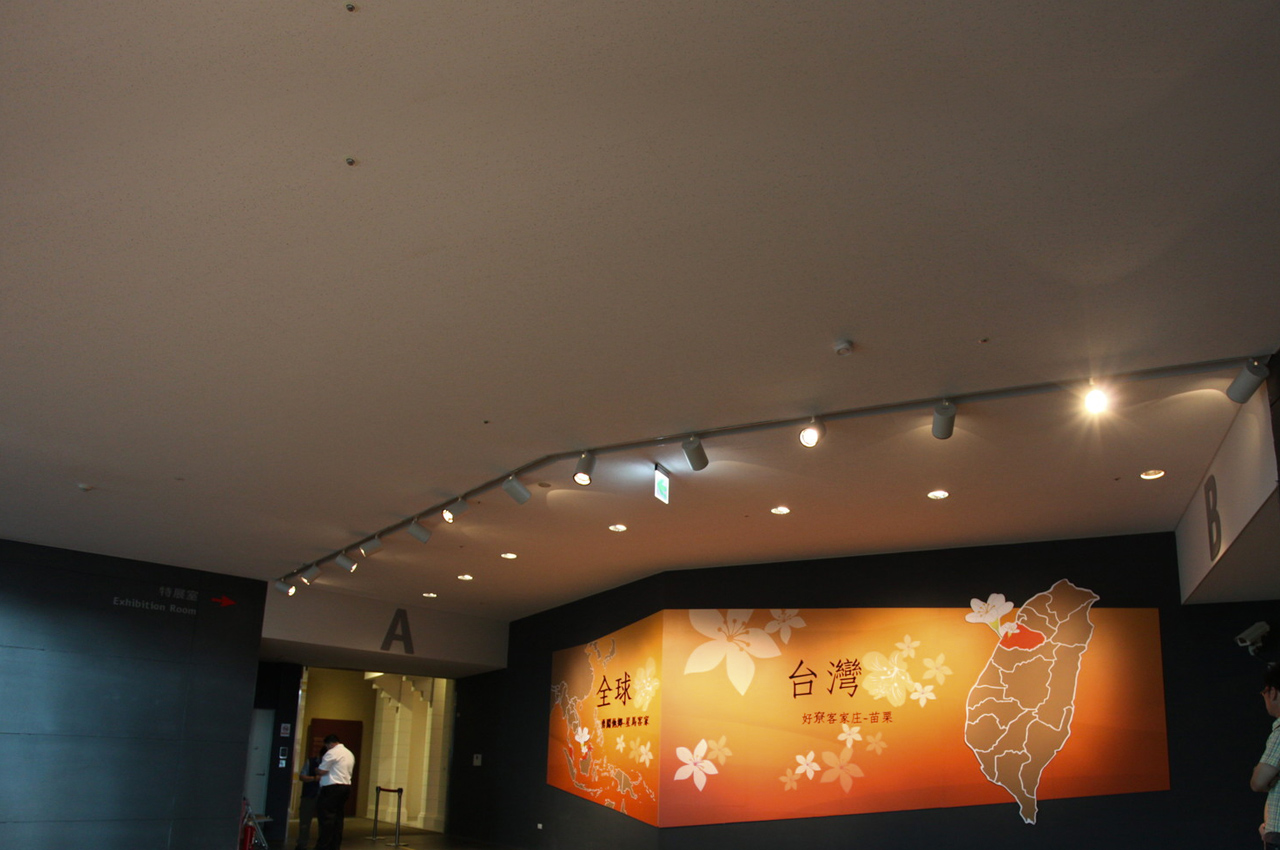Exhibition Review
Take a Walk – Thirteen Villages on the South Bank

Subheading: Zuodui Settlement Exhibition Takes Place at Xinpi Township
Time: 2022.7.30~2022.10.31
Location: Chung Family Cluster House, Jiangong Village, Xinpi Township (No. 10, Jiancheng Alley, Jiangong Road, Jiangong Village, Xinpi Township, Pingtung County)
The stream flows down from Dawu Mountain through canals, ditches, and embankments, and takes a turn to hide in a village before coming out again. It says: “I welcome everyone to follow me and take a walk around the cluster house together. I will slowly tell you all the stories from the old times.”
Through collection of villagers’ memories through interviews and compilation and investigation of objects, the exhibition focuses on showcase and representation of its themes. Through sharing and co-learning, people are encouraged to visit the settlement, and discover that every village is a museum.
◆Take a Walk – Thirteen Villages on the South Bank
The only coastal region among Liudui (Six Clusters), “Zuodui” was known as the “Thirteen Villages on the South Bank” in the past. Located at the southern tip of Pingtung plain, Zuodui mainly covers the area within Jiadong Township and Xinpi Township in Pingtung County. Through temporal and spatial changes, the region has been given various names. Today, Zuodui’s Hakka people mostly live in administrative areas of Xinpi, Jiangong, Datie, and Nanfeng villages in Xinpi Township and Changlong, Fenglong, Liugen, Jiadong, Wanjian, and Laijia villages in Jiadong Township.
◆Settle by Water, Live by Water
Zuodui Xinpi is located on the spring belt at the end of the alluvial fan of Linbian River, where water table intersects with ground surface, giving it abundant spring resources. Moreover, with higher groundwater level, shallow wells are sufficient to provide water supplies all year round. Therefore, early pioneers chose to settle here and gradually formed a settlement, while also giving rise to water-related life memories and cluster houses.
◆Hakka Gods
Ancestors of Liudui would worship “First Earth God” when they first settled in the region. As the settlements grew larger, Earth God shrines spread and protected more people. With abundant underflow water in the Xinpi area, people worship Earth God at ponds, river downstream, and canals to safeguard water source and ensure local safety. In addition to the Earth God belief, the villagers also have a unique local culture of “Neighbor Pieties,” who join Earth God to bless the villagers with good harvest. Villagers participate in the “Zuo Fu (wishing for luck)” ritual before the Lantern Festival, and Zuodui Xinpi and Jiadong have preserved the ancient ceremony of “Bai Xing Ding (praying for newborn boys).”
◆Searching for Old-Time Memories
Life in Xinpi has constantly changed with time. Remember how it was when you followed grandma to watermelon field every day? In the grain-sunning ground, children played and laughed; the scents of sugarcane and watermelon came over from the fields; nostalgic flavor could be found in the kitchen, it was the crispy pan-fried watermelon rice cake…Xinpi has gone through the old times, and local villagers are not intimidated by the temporal and industrial changes, igniting new energy through community building movement to re-embrace this land.
◆Story-Telling Water
Artist Wang Yen-Chen/Co-Creation by Teachers and Students of Da Cheng Art Experimental Primary School and Local Residents in Pingtung County
To explore story-telling possibilities through the idea of “water,” the artist first focused on written context. By inviting teachers and students of Da Cheng Art Experimental Primary School and local residents to each come up with a word/term relating to water and using mixed media and Taiwan’s traditional raised embroidery for creation, the artist built an imagery of water to trigger viewers’ thoughts on the relationship between water and mankind through the creative work; water facilitates the viewers’ sense of civilization, and the viewers respond to the stories told by water through concrete actions.


